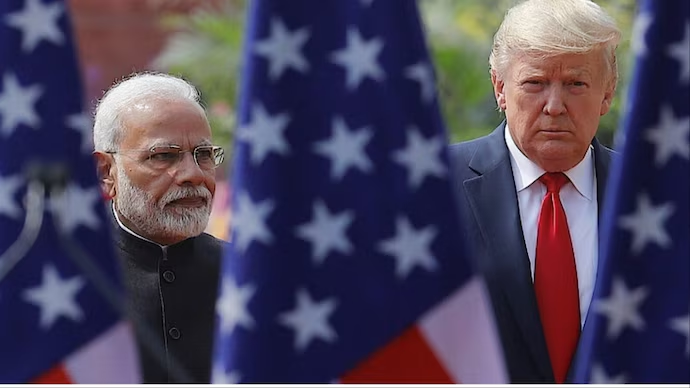Share

India’s Digital Mission marks nine years of progress, positioning the nation as a leading digital economy. As e-commerce is projected to reach $350 billion by 2030, the focus shifts to how MSMEs can harness this growth through digital integration, skills training, and supportive policies. How can MSMEs leverage this digital growth in e-commerce to streamline their integration into this expanding digital ecosystem?
By Ashish Kumar and Harshvardhan Singh:
India’s journey of digital transformation has been remarkable, characterized by the consistent development of a strong digital public infrastructure that now plays a pivotal role in the nation’s progress. Celebrating the completion of 9 years of the Digital India Mission, the comprehensive access to the internet within commerce has triggered a significant shift throughout the country. India currently holds the position of being the world’s third-largest digitalized nation. As we observe the swift advancement of e-commerce, with expectations of it growing to $350 billion by 2030, a fundamental question arises: how can MSMEs leverage this digital growth in e-commerce to streamline their integration into this expanding digital ecosystem?
Digital India Fueling E-Commerce:
The story of the making of a Digital India resonates through various facets of the nation’s growth machinery. What we now see as a digital revolution, was once a steady progress, driven by a robust digital public infrastructure that plays a crucial role in facilitating the nation’s digital shift – delivering services that are citizen-centric and transparent. A digital public Infrastructure is an ecosystem of digital IDs, payments, and digital exchange. This well-rounded ecosystem that has given rise to numerous sectors has been fostered by the Digital India Mission, thriving on the principle of “digital infrastructure as a fundamental utility for all citizens”.
One major sector that has truly emerged as a game-changer is e-commerce. Although e-commerce as a concept first emerged in the 1990s in India, it truly took off by 2017 when India had a whopping 176.8 million e-commerce users. E-commerce has catalyzed small businesses to grow without the need for expensive physical stores. Some don’t even have their website but rely on third-party platforms that provide access to a large pool of shoppers, along with various fulfillment services. E-commerce sets itself apart from traditional markets through three main advantages: reach, time, and pricing. Major platforms now cover over 80% of India’s pin codes, significantly broadening market access. Delivery time has been greatly reduced, even for globally sourced products, and e-commerce often offers more competitive pricing. These factors collectively enhance growth by linking sellers with a larger customer base, improving convenience, and offering better value. Digital payments on these platforms also create financial records, facilitating small sellers’ access to formal finance and enabling economies of scale. Customers enjoy new benefits like cashback, loyalty points, wide variety of product choices, convenient return policy etc. making their shopping experience more seamless and enjoyable. The expansion of e-commerce drives increased demand for logistics and digital payment services, creating an interconnected link for growth. This digital infrastructure, initially built for internal growth, has laid the groundwork for India’s aspirational export goals, extending its benefits to cross-border trade and positioning MSMEs at the forefront of India’s export drive.
Boosting E-Commerce Exports:
With the launch of the New Foreign Trade Policy 2023, the Government of India aims to achieve $1 trillion in merchandise exports by 2030, targeting a compound annual growth rate of roughly 12%. India’s e-commerce exports stood at $4-5 billion in FY 2023, representing roughly 1% of total merchandise exports, in stark contrast to China’s e-commerce exports of $ 250 billion, which account for approximately 6.4% of its total merchandise exports. India needs to undertake various reforms like framing distinct national and State policies for e-commerce exports, separate regulations/laws for e-commerce clearly demarcating responsibilities between sellers and e-commerce platforms. In addition, faster customs clearance with special provision for courier exports, increasing consignment limit of courier exports and subsequently removing it altogether (presently capped at Rs. 10 lakhs per consignment) would go a long way to boost export through e-commerce. Further, support to the exporters through incentives in logistics, warehousing would greatly encourage exporters. Equally important is skilling MSMEs for the digital age. Many lack the expertise needed for online selling, such as digital cataloging and adapting to e-commerce trends. The Government is fostering public-private collaborations to provide comprehensive support, including digital literacy education, training in product imaging, and sensitizing MSMEs to global selling opportunities. These concerted efforts aim to create a more inclusive digital ecosystem, empowering small businesses to compete effectively on the world stage and drive India towards its ambitious export goals. The digital revolution has opened up a world of possibilities for India’s MSMEs in the e-commerce space. As we look towards 2030, with a promise of an export-led trillion-dollar digital economy, it’s clear that small businesses are at the heart of this transformation. The journey ahead isn’t without its challenges. MSMEs will need to navigate complex regulations, acquire new digital skills, and adapt to rapidly changing market dynamics. The Government’s initiatives, coupled with private-sector collaboration, are paving the way for a more inclusive digital ecosystem. As these efforts unfold, we are likely to see a new generation of small businesses emerge, ready to seize opportunities in cross-border e-commerce and beyond.








